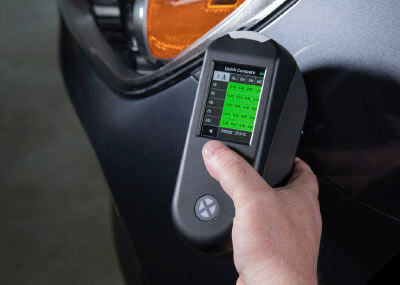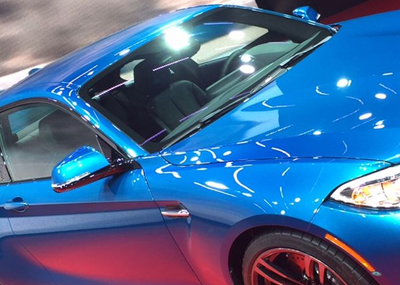Drive Innovation with Automotive Paints & Coatings
When it comes to car purchases, color is one of many factors that influence consumer buying decisions. The first thing people notice is the quality of the color and the appearance of the paint. Highly innovative trends and demand for new color developments have driven a need for car paints that have metallic or pearlescent effects.
How do you control both color and appearance of effect paints? These effects coatings serve a dual purpose of protecting the automobile and delivering a competitive advantage. Due to differences in processes like paint application, bake temperature or time, the possibility of color changes is not a surprise. That is why setting and achieving tight color tolerances is so crucial for automotive paints and coatings manufacturers. Precise automotive color measurement tools ensure tolerances can be met, color and appearance of the car can be measured and controlled, and unnecessary waste can be eliminated.
Customizable solutions from X-Rite provide automotive paints and coatings manufacturers the ability to:
- Achieve tight tolerances to minimize variation and ensure color consistency in a production run.
- Evaluate metallic and special effect pigments 60% faster to improve color evaluation accuracy on automotive paint.
- Provide optimum initial color matches and reduce number of correction step needed by increasing the percentage of acceptable first matches by up to 50%.
Quality Control for Automotive Paints & Coatings:
A reliable and easy-to-use quality control program ensures color is within tolerance to reduce overall rejections, even with difficult to measure effect pigments.
-
MA-5 QC Multi-Angle Handheld Spectrophotometer:
Evaluate effect pigments consistently with five standard measurement angles.
-
MA-T12 Multi-Angle Handheld Spectrophotometer:
Verify color, sparkle, and coarseness to deliver true communication and visualization of effect coatings.
-
EFX QC Software:
Track color measurement data on effect pigments to gauge quality and look for areas of improvement to increase overall profitability and reduce waste.
Featured Resources
Learn how the MA-5 QC multi-angle spectrophotometer and EFX QC software improve the accuracy of color evaluation and track data for process improvement on automotive paint.
Pobierz nasz poradnik, aby dowiedzieć się, dlaczego ważne jest mierzenie wykończeń efektów specjalnych, co to umożliwia i w jaki sposób MA-T jest wiodącym rozwiązaniem do pomiaru barwy, połysku i chropowatości.
Dowiedz się, w jaki sposób innowacyjna technologia pomiaru barwy może skrócić czas projektantom i firmom lakierniczym na produkcję barw nowych samochodów.





